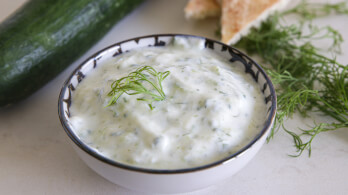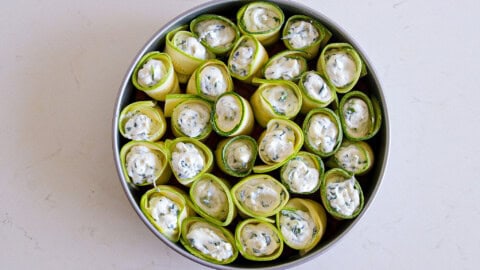Greek Tzatziki Sauce Recipe

This classic tzatziki sauce is made of Greek yogurt, cucumber, garlic, olive oil and more. Tzatziki is Greek sauce/dip that goes along with many delicious dished such as gyros, souvlaki and more.

Greek Tzatziki Sauce Recipe
Ingredients
- 1 large Cucumber
- Salt
- 3 teaspoons White wine vinegar divided
- 1¼ cups 350g Greek yogurt
- 1 small Garlic clove finely crushed
- 2 tablespoons Olive oil
- Pepper to taste
- 1-2 tablespoons Dill chopped
Instructions
- DIRECTIONS
- Grate the cucumber, transfer to a bowl, add pinch of salt, 1 teaspoon white wine vinegar, mix and set aside to release its liquids.
- Meanwhile, in a bowl, mix yogurt, crushed garlic, 2 teaspoons white wine vinegar, olive oil, chopped dill, salt and pepper.
- Drain grated cucumber through a fine mesh sieve or a cheese cloth and add to the sauce. Mix well.
- Serve.
- You also can wrap grated cucumber with a thin kitchen towel or cheesecloth. Twist the towel into a pouch and squeeze out excess liquids.
Video









